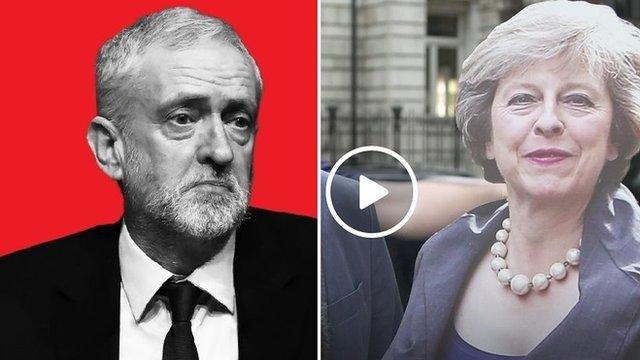General election 2017: What caused Labour's youth vote surge?
- Published

A boosted youth vote is believed to have contributed to Labour's shock election result, but what made young people turn out to vote?
In 2015, voter turnout among 18- to 24-year-olds was estimated to be 43%, compared with a 66.1% turnout overall, external. This year, YouGov, external puts the youth turnout at 58%.
Polling traditionally shows that a majority of young people vote Labour. This year, the proportion has jumped to 63% for 18-29-year-olds, according to YouGov, external.
So how did this change happen?
Social adverts
Sam Jeffers, co-founder of Who Targets Me, external, which monitored the use of social media adverts by the political parties during the general election, said it seemed clear that Labour defeated the Conservatives in the social media battle.
Labour's adverts had consistently been shared more widely by social media users, he said.
Part of this appears to be down to the difference in tone of the adverts.
While the Conservatives had almost entirely focused their adverts on the strength of Prime Minister Theresa May and the weakness of Labour leader Jeremy Corbyn, Labour's social media adverts had been more positive, seeking to emphasise that the party was building a social movement, he said.
And this had been combined with the repeated use of adverts with practical messages designed to increase youth voter turnout by giving instructions on how to register to vote and where to find local polling stations.
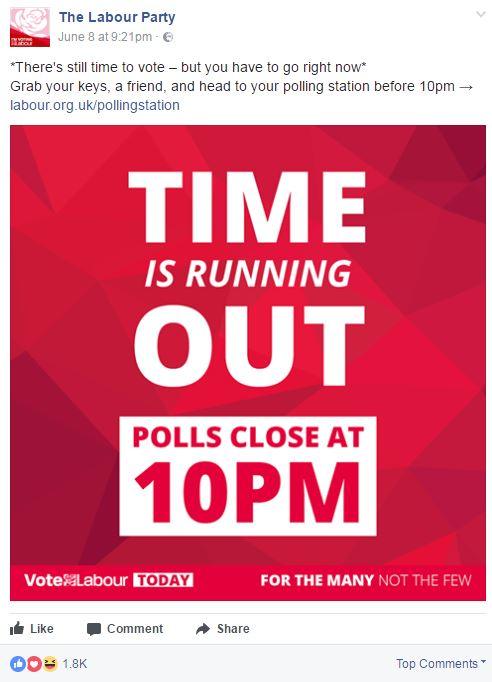
Many of Labour's adverts had practical messages on things such as finding local polling stations
Adverts also appeared to have been released on specific days on the basis that their message was likely to cut through for only a limited amount of time, Mr Jeffers said.
For example, Labour had invested heavily on adverts attacking the Tories' so-called "dementia tax" on social care costs, days before the 8 June election.
The aim of this appeared to be to suppress the older, potentially Conservative, vote or get them to switch to Labour at the last minute, Mr Jeffers said.
Labour also focused its attention on more of the UK, targeting 464 constituencies in the final two days of the election campaign. The Tories targeted 205.
Viral videos
While the Labour Party paid for targeted adverts on social media, Momentum - the group that was set up to support Mr Corbyn's leadership bid and now campaigns for Labour - had a different social media strategy.
Rather than pay for advertising, it instead sought to create content it hoped social media users would share voluntarily.
The group created videos - many of them parodies - it hoped would become viral.
These included Daddy, why do you hate me? - a mock political broadcast telling people to vote for Theresa May "because your children deserve worse" - which Momentum says has been viewed more than 7.6 million times across social media platforms.
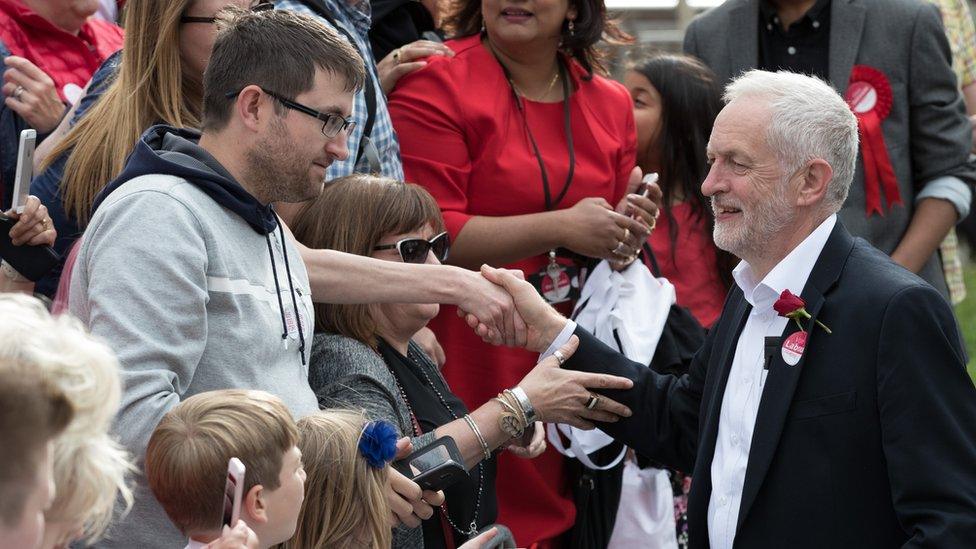
Many of Momentum's videos show Jeremy Corbyn embracing his supporters
Its Facebook and Twitter pages feature a mixture of content, from posts mocking Theresa May's record to videos of Mr Corbyn hugging some of his supporters.
Joe Todd, from Momentum, said the group had felt its strategy was working when it had realised many of the people sharing its content were not typical supporters of Mr Corbyn.
Increasingly, users liking its Facebook page had been people who also liked the pages of TV programmes not known for their political audiences, such as Ant and Dec's Saturday Night Takeaway and Match of the Day, he said.
"We were breaking out of the leftie bubble," Mr Todd said.
Mobilising campaigners
Using message services to reach the young - and in some cases mobilising them into an army of potential canvassers - had been important in reaching the youth vote, Mr Todd said.
Momentum says it reached some 400,000 people through the messaging platform WhatsApp, which data shows, external is used most by 18-to 29-year-olds, in the UK.
The group also set up mynearestmarginal.com - a website that enables activists to pool together, and often lift share, to canvass in marginal seats.
Momentum says the website was used by about 100,000 people - more than four times as many as its 24,000 membership.
This meant young people with no experience of canvassing could team up with those with previous election experience for targeted canvassing.
"If you have a young person telling another young person, 'You should get out and vote because this election is important', it's more convincing," Mr Todd said.
Manifesto
There was also an unashamed pitch for the youth vote at the heart of Labour's manifesto For the Many, Not the Few, external - and that was the eye-catching promise of scrapping tuition fees for university students and the pledge to reintroduce their maintenance grants.
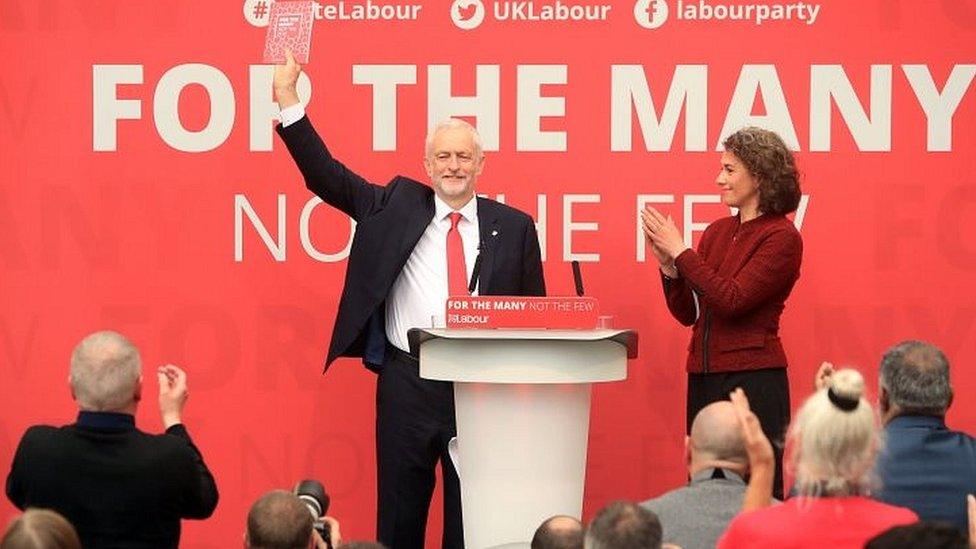
Further policies pitched with the young in mind included the ending of zero-hour contracts and unpaid internships, a rise in the minimum wage, and a pledge to build more than one million homes.
Of course, Labour wasn't the only party that targeted young people and it's hard to quantify the effect of the manifesto in getting the young out to vote, but Mr Todd felt it was among the most significant factors.
"It conjured up a sense of hope," he said.
Protest movement
The Labour campaign also featured large rallies that accompanied Jeremy Corbyn's speeches around the country.
Mr Corbyn had been a long-standing supporter of the protest movement, and the veteran anti-war campaigner was well placed to appeal to a growing number of young people who had become engaged in politics through these movements, according to Sam Fairbairn, national secretary of the People's Assembly protest group.
Although the People's Assembly does not endorse individual parties or candidates, Mr Fairbairn said the group - and its numerous local affiliates and sister organisations - had encouraged members to join Mr Corbyn's campaign rallies.
"It's no accident Jeremy has been part of these movements since he's been in politics. This is how many young people have got into politics in the last 10 years," Mr Fairbairn said.
"What we saw was the result of the work all these movements have done."
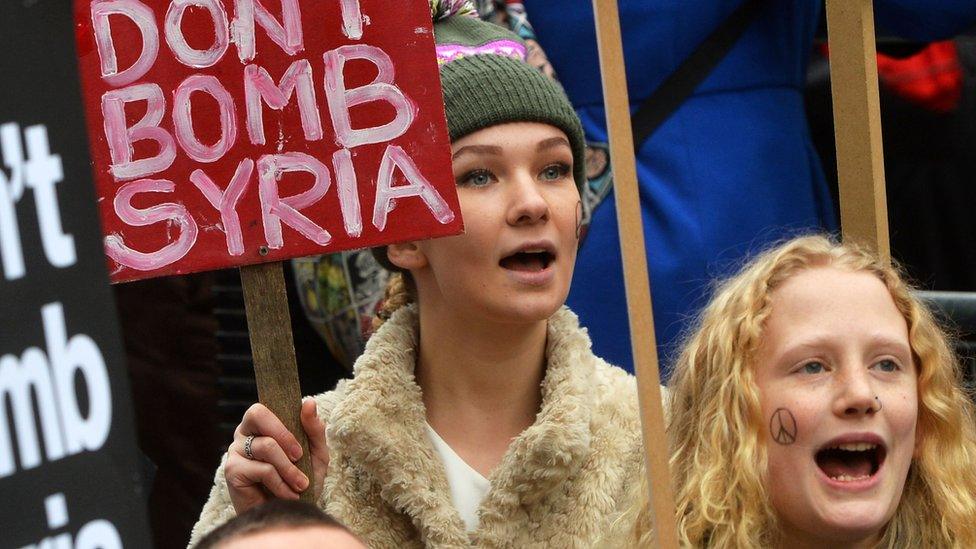
Young people have increasingly taken part in political protests
A string of endorsements from anti-establishment celebrities and musicians, including from the world of grime - a genre of music that blends garage and jungle and has a Jamaican influence - also, arguably, further bolstered Mr Corbyn's youth credentials.
Mr Corbyn also took part in interviews with outlets - such as rock magazines NME and Kerrang, and football YouTube channel Copa90 - outside of the political mainstream that were more likely to reach younger audiences.
Becka Hudson, from the #Grime4Corbyn campaign, told the BBC's Victoria Derbyshire programme Mr Corbyn had "offered young people a programme they can believe in and a better future".
'Victory realistic'
The question is what happens next with that youth support.
Is there the danger the young will be discouraged by the election result and be less likely to turn out at the next election, whenever that may be?
Mr Todd thinks the opposite is the case.
"For most people this project was something they believed in, but it seemed like it might not be possible. Now the prospect of victory is really realistic," he said.
- Published9 June 2017
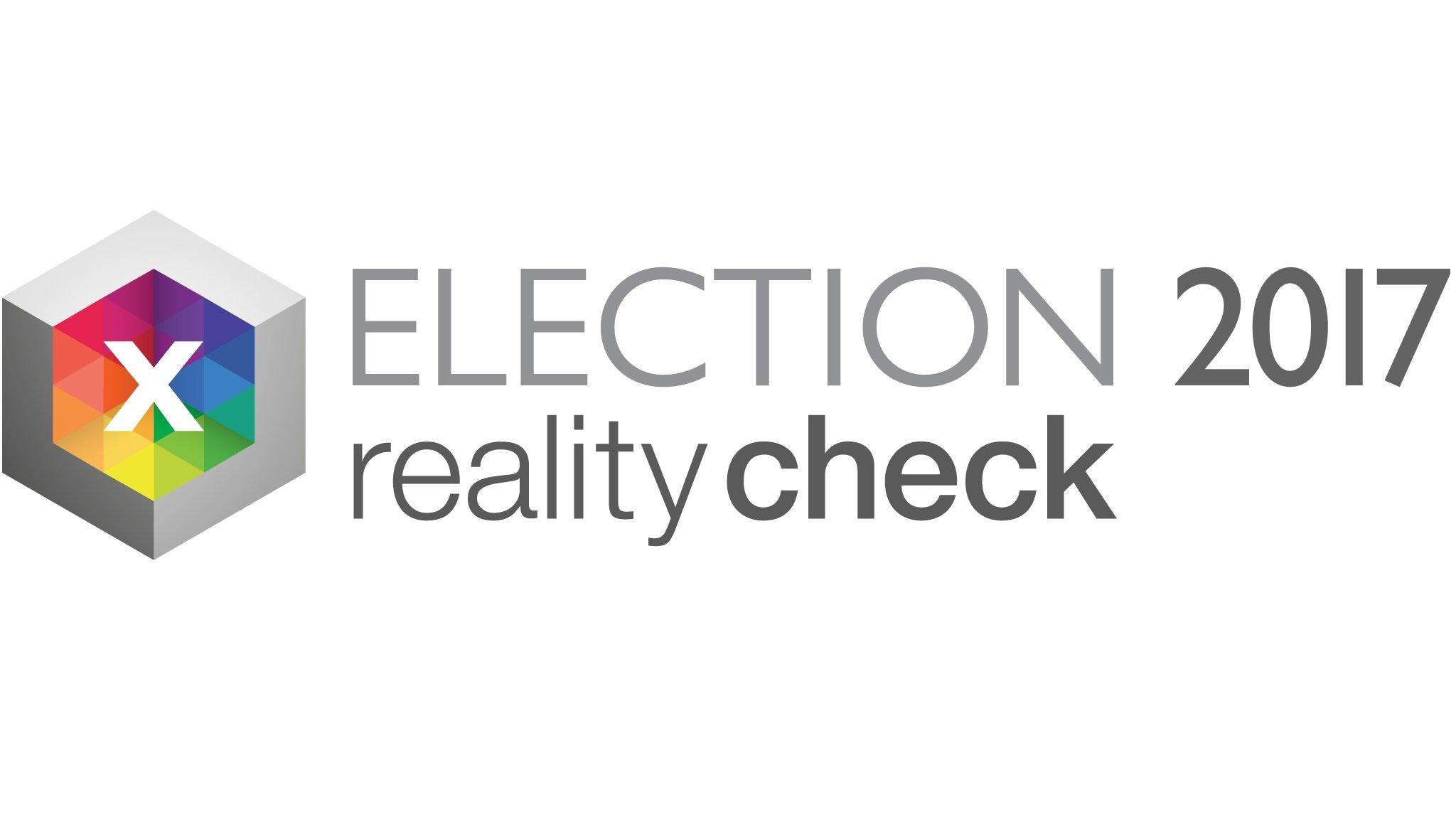
- Published10 June 2017
